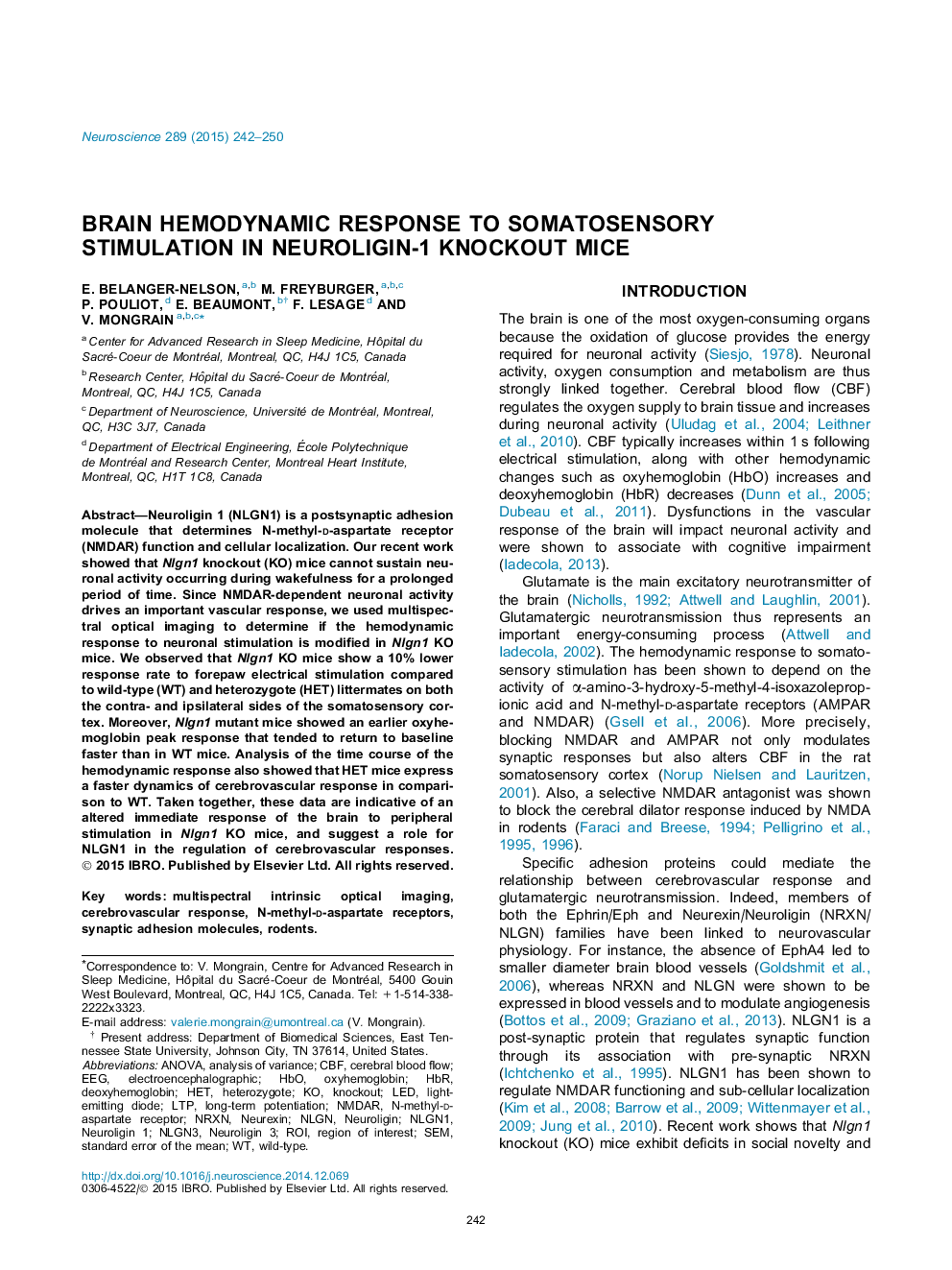| Article ID | Journal | Published Year | Pages | File Type |
|---|---|---|---|---|
| 4337530 | Neuroscience | 2015 | 9 Pages |
•Nlgn1 KO mice exhibit a lower cerebrovascular response rate to peripheral stimulation in the somatosensory cortex.•Nlgn1 KO and heterozygous mice express a faster hemodynamic response to somatosensory stimulation.•Results suggest a role for NLGN1 in the regulation of cerebral cortex hemodynamics.
Neuroligin 1 (NLGN1) is a postsynaptic adhesion molecule that determines N-methyl-d-aspartate receptor (NMDAR) function and cellular localization. Our recent work showed that Nlgn1 knockout (KO) mice cannot sustain neuronal activity occurring during wakefulness for a prolonged period of time. Since NMDAR-dependent neuronal activity drives an important vascular response, we used multispectral optical imaging to determine if the hemodynamic response to neuronal stimulation is modified in Nlgn1 KO mice. We observed that Nlgn1 KO mice show a 10% lower response rate to forepaw electrical stimulation compared to wild-type (WT) and heterozygote (HET) littermates on both the contra- and ipsilateral sides of the somatosensory cortex. Moreover, Nlgn1 mutant mice showed an earlier oxyhemoglobin peak response that tended to return to baseline faster than in WT mice. Analysis of the time course of the hemodynamic response also showed that HET mice express a faster dynamics of cerebrovascular response in comparison to WT. Taken together, these data are indicative of an altered immediate response of the brain to peripheral stimulation in Nlgn1 KO mice, and suggest a role for NLGN1 in the regulation of cerebrovascular responses.
